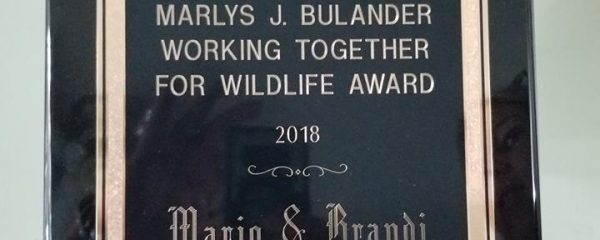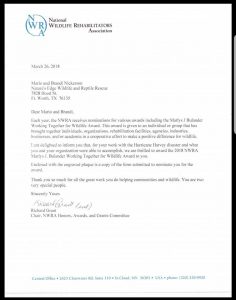Caiman Intake 10/17/2022
https://app.resilia.com/s/story?id=5a726bc6db0c8e2cf4f766332853ff07621d23e1
We have a new guest here at Nature’s Edge. Assisted a local game warden with a highly imprinted and malnourished female white-tailed deer (Odocoileus virginianus). Deer was found as a fawn and given to somebody else as a “gift.” While an imprinted fawn seems like a cute pet, they can be very dangerous as adults. Their hooves are razor sharp and a male with antlers can do some serious damage, especially during breeding season.Please understand momma leaves her babies alone during the day to protect them from predators. Mom has an odor babies do not. Mom is close by watching. We make posts every year on how to tell if a fawn is truly in need of help. Please contact a rehabber if you find a fawn to discuss the situation.This girl will stay with us for now to see if we can wild her up enough for a safe release as well as get her to a proper body condition. Special thanks to Amethyst and Justin for their assistance with pick up and transport, and the use of their horse trailer. It took all 4 of us to safely move this gal.


Two days ago, we had some interesting intakes! Take a look at this super amazing baby fox squirrel (Sciurus niger).

This little dude has a genetic mutation called leucism, which is a condition characterized by reduced pigmentation in animals caused by a recessive allele. Unlike albinism, it is a reduction in all types of skin pigment, not just melanin. Albino have red eyes, lucistic have darker eyes. And yes, he is as yellowish as he looks! He may turn white as he gets older.
You can see below how he stands out from other squirrels around the same age in our incubator. Typically, animals with this kind of genetic mutation do not survive long in the wild. They kind of stand out. This guy will be destined for a life of education programs pending state approval.

While we do not name rehab animals, we are looking for name recommemdations since this guy will be destined for education. Mario wants to name it Ear Wax. Ew for short…. please help!
**warning: graphic photos at the bottom of this post!
Bird rehabbers have been battling for years the idea of putting things like hair, string, yarn, etc…out as nesting material for birds. Another perfect example of why that is a horrible idea. Two mockingbird (Mimus polyglottos) chicks brought to us last night. One dead, one alive (cat found them, but that is a whole different conversation). Tied together at the knee by some kind of string. Lower leg completely dead. Had to be euthanized for a few different reasons. By permit, any bird that has to have a leg amputated has to be euthanized. We have no say in that matter. One legged birds develop all kinds of problems. Yes, we have seen one legged birds in the wild too.

Anywho… If you must put something out as nesting material for birds, use grasses, hay, etc… makes a much better and safer solution. Plus it’s natural, and in most cases free!




Fun fact: the mockingbird is the state bird of Texas (1927), Florida (1927), Arkansas(1929), Tennessee (1934), Mississippi (1944), and is the former state bird of South Carolina (1939-1948).

Nature’s Edge Wildlife and Reptile Rescue is in desperate need of a new vehicle. To say we put a vehicle through it’s paces is an understatement. The Suburban we have now is a 2005 and has over 230,000 miles on it. The repairs are beyond starting to exceed the value, and will cost too much to make it pass Texas vehicle inspection this month. We use 4 wheel drive on a regular basis, haul stuff (including a trailer), travel to education and adoption events, picking up supplies and animals, and let’s not forget the occasional use as an emergency ladder to get birds out of trees.
Last year we drove more than 13,000 miles picking up animals, supplies, traveling to education programs, reptile expos, etc. About 10,000 miles consisted of transporting animals, over 2,000 miles were driven traveling to education programs and almost 700 miles driven to reptile expos. And that doesn’t even count all the miles driven to and from our vet’s office and that is a 67 mile trip.
We made three trips down to the coast after Hurricane Harvey in August 2017 to pick up wildlife and deliver needed supplies to wildlife rehabilitators. We have driven as far away as New Mexico to pick up animals in need. We drove to Tyler one afternoon just to pick up a western ratsnake that had swallowed three ceramic eggs. We also drove to Kansas one year to meet a college professor that adopted several reptiles for use as education animals.
A reliable vehicle is necessary to help us continue caring for animals in need. Please consider helping us purchase a new used vehicle.
As always, we truly thank each and every one of you for your continued support!

Open a large package to find this!
Thanks to our friends at Zilla Products for the donation of dehydrated food. Just in time for baby season! To learn more about Zilla and their products, visit their website: https://www.zillarules.com/

Was just over a week ago we made a post about Easter animals. Well, it’s already begun. Two of these were surrendered unwanted gift pets (mallard and pekin), two others were found roaming around. Suspect released pets (pekin and crested [poof ball on head]).
Please do not buy animals as pets unless you know for certain that person actually wants one.
Okay I can not believe I even need to talk about this, but, due to recent phone calls and conversations I feel I must.
First off, rehabbing animals is NOT our job. Let me explain. Helping animals is what we do, but nobody pays us to do this. We actually pay for the privilege to help animals. We pay for the permits, food, medical supplies, heating, electricity, water, etc… Saying it’s a job would mean that somebody pays us to do this. There is no reimbursement from the state or feds for what we do. In fact, most rehabbers work a regular job besides rehabbing so that they can continue to rehab animals.
Second, we operate out of our home. Most rehabbers do. We can not afford a big rehab center. Wish we could. Most places that do have had said centers donated to them to operate out of. Operating out of ones home when it comes to caring for sick, injured, and orphaned wildlife has it’s own unique set of challenges.
So to summarize, we operate off of our own back pockets, in kind donations, and sometimes we find small grants and other small projects such as education events to help offset costs.
So next time you call a rehabber and demand they come out to save an animal because “it’s their job”, please remember it’s not a job. It’s a passion to help animals in need due to human interactions. Don’t get mad at the rehabber and start yelling at them about how horrible of a person they are because they can not stop either working a job, helping somebody else with an injured animal, or caring for the animals already in their possession, to come and pick up an injured animal right in front of you.


We were very honored, and shocked, to learn that we had been nominated for, and received the 2018 National Wildlife Rehabilitators Association Marlys J. Bulander “Working Together for Wildlife Award” for our work during hurricane Harvey.
Our work during that time would not have been possible without our wonderful friends and supporters. Three trips to south Texas, lots of supplies, lots of late nights working on feeding babies.
A huge thank you goes out to everybody. We could not do what we do without your support!
